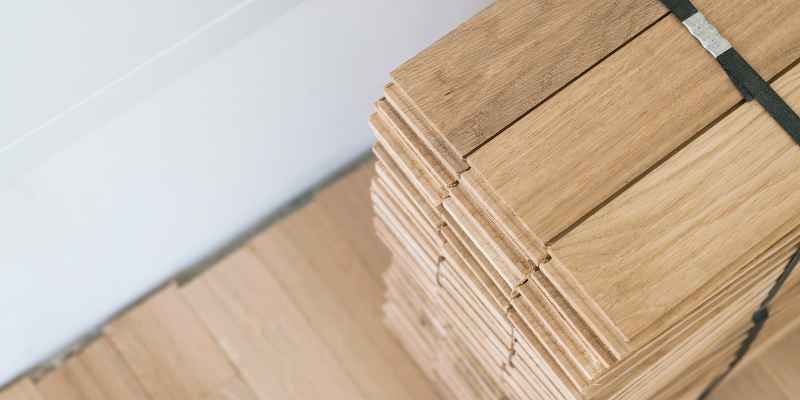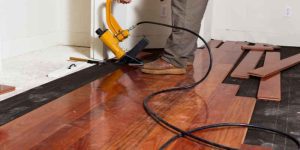To buy hardwood, research different types, consider durability and aesthetics, and choose a reputable supplier. Hardwood adds warmth and character to any space, making it a popular choice for flooring, furniture, and decor.
When purchasing hardwood, it’s essential to understand the various species available, their unique characteristics, and how they will complement your design style. Quality and sustainability are also crucial factors to consider when investing in hardwood products. By following these steps, you can confidently select the perfect hardwood for your project and create a timeless, natural look in your home or office.
Getting Started With Hardwood Purchases
When it comes to buying hardwood, it’s essential to start by identifying your needs and understanding the types of hardwood available. This will help you make an informed decision and ensure that the hardwood you purchase meets your specific requirements.
Identifying Your Needs
Before purchasing hardwood, consider factors such as the location where it will be installed, the level of foot traffic in that area, and your desired aesthetic. Identify whether you need hardwood for a high-traffic area like a hallway or a low-traffic area like a bedroom. This will help you determine the hardness and durability required for the hardwood.
Types Of Hardwood
There are two main types of hardwood: solid and engineered. Solid hardwood is made from a single piece of wood and is known for its durability and timeless appeal. On the other hand, engineered hardwood is constructed from multiple layers of wood and offers enhanced stability, making it suitable for areas with fluctuating humidity levels such as basements.
Understanding Hardwood Grades
Understanding hardwood grades is essential when purchasing hardwood for your flooring or furniture. Hardwood grades are a measure of the quality and appearance of the wood, helping buyers make informed decisions. By learning about hardwood grades, you can ensure that you select the right type of wood for your specific needs.
Grade Categories
Hardwood grades are categorized into different levels based on the appearance and quality of the wood. The most common grade categories include:
- Select Grade
- #1 Common Grade
- #2 Common Grade
Impact On Price And Appearance
The grade of hardwood significantly impacts both the price and appearance of the final product. Higher-grade hardwood tends to have fewer imperfections, resulting in a more refined and uniform look. Conversely, lower-grade hardwood may feature more knots, color variations, and mineral streaks, which can affect its overall appearance. Additionally, higher-grade hardwood generally commands a higher price due to its superior quality and consistency.
Measuring Hardwood Quality
When purchasing hardwood, it’s crucial to understand how to measure its quality. By following a few key guidelines, such as inspecting the grain pattern, checking for knots, and assessing the moisture content, buyers can make informed decisions and ensure they are getting the best hardwood for their needs.
When it comes to buying hardwood, one of the most important factors to consider is the quality of the wood. Measuring hardwood quality involves evaluating the hardwood based on certain criteria such as the hardness scale and moisture content. In this section, we will discuss these two factors in detail to help you make an informed decision when buying hardwood.
Hardness Scale
Hardness is an important factor to consider when purchasing hardwood. The Janka hardness scale is used to measure the hardness of wood. This scale ranges from 0 to 4000, with higher numbers indicating harder wood. Hardwood species such as Brazilian Walnut, Ebony, and Brazilian Cherry have high Janka ratings and are considered to be some of the hardest woods. On the other hand, softer woods such as Pine and Cedar have lower Janka ratings. It is important to select the right hardwood species based on your needs and preferences.
Moisture Content
The moisture content of hardwood is another important factor to consider. Moisture content is the amount of water in the wood, and it can affect the durability and stability of the hardwood. Ideally, the moisture content of hardwood should be between 6% and 8%.
If the moisture content is too high, the hardwood can warp, crack, or shrink. On the other hand, if the moisture content is too low, the hardwood can become brittle and prone to damage. To ensure that the hardwood is of good quality, it is important to check the moisture content using a moisture meter before purchasing.
In conclusion, measuring hardwood quality involves evaluating the hardwood based on certain criteria such as the hardness scale and moisture content. By considering these factors, you can select a hardwood species that is durable, stable, and suitable for your needs.
Choosing The Right Color And Finish
When purchasing hardwood, choosing the right color and finish is crucial for achieving the desired look in your space.
Color Consistency
Ensure color consistency by selecting boards from the same batch to avoid variations.
Finish Types
Consider different finish types such as matte, satin, or glossy for the desired aesthetic.
Sustainability And Environmental Considerations

When it comes to buying hardwood, it’s not just about the quality and appearance of the wood. It’s important to consider the impact the purchase will have on the environment. Choosing sustainable hardwood options is crucial in protecting our planet’s natural resources and biodiversity for future generations.
Certifications To Look For
One way to ensure that the hardwood you’re buying is sustainable is to look for certifications from reputable organizations. The Forest Stewardship Council (FSC) and the Programme for the Endorsement of Forest Certification (PEFC) are two of the most well-known organizations that provide certifications for sustainable forestry practices.
| Certification | Description |
|---|---|
| FSC | The FSC certification ensures that the wood has been sourced from forests that are managed in an environmentally responsible way, while also taking into account the social and economic needs of local communities. |
| PEFC | The PEFC certification also ensures that the wood has been sourced from sustainably managed forests, but with a focus on the economic viability of the forest as well as its environmental impact. |
Eco-friendly Practices
Aside from certifications, it’s important to look for hardwood suppliers who practice eco-friendly methods. This includes sourcing wood from local forests to reduce transportation emissions, using renewable energy sources in their production facilities, and minimizing waste and pollution.
- Choose suppliers who use renewable energy sources in their production facilities
- Look for suppliers who source wood from local forests to reduce transportation emissions
- Choose suppliers who minimize waste and pollution in their production processes
By taking these sustainability and environmental considerations into account, you can make a conscious decision to support responsible forestry practices and protect the planet’s natural resources for generations to come.
Where To Buy: Retail Vs. Wholesale
When it comes to purchasing hardwood, one of the key decisions you’ll need to make is whether to buy from a retail or wholesale supplier. Each option has its own set of pros and cons, as well as considerations in terms of online versus local suppliers.
Pros And Cons
Before diving into the specifics of online versus local suppliers, let’s take a look at the general pros and cons of buying hardwood from retail and wholesale sources:
| Retail Suppliers | Wholesale Suppliers |
|---|---|
|
|
|
|
Online Vs. Local Suppliers
Now, let’s explore the factors to consider when deciding between online and local suppliers:
Online Suppliers
Online suppliers offer the convenience of browsing and purchasing hardwood from the comfort of your own home. Here are some key points to consider:
- Wide selection: Online suppliers often have a vast range of hardwood options available, allowing you to find the perfect fit for your project.
- Competitive pricing: Online suppliers may offer lower prices due to reduced overhead costs, allowing you to potentially save money.
- Reviews and ratings: By checking reviews and ratings from previous customers, you can gain insights into the quality and reliability of the online supplier.
- Shipping considerations: Ensure you understand the shipping costs, delivery times, and return policies before making a purchase.
Local Suppliers
Local suppliers provide the advantage of being able to physically examine the hardwood before making a decision. Here are some key points to consider:
- Personalized assistance: Local suppliers may offer personalized customer service, helping you with product selection and answering any questions you may have.
- Immediate availability: When purchasing from a local supplier, you can often take the hardwood home immediately, eliminating the need to wait for shipping.
- Supporting local businesses: Buying from local suppliers helps support the local economy and community.
- Transportation logistics: Consider the transportation logistics and costs associated with picking up the hardwood from a local supplier.
Budgeting For Your Hardwood Purchase
When buying hardwood, budgeting is crucial to ensure you get the best value for your money. Understanding the Cost Factors and implementing Saving Tips can help you make an informed decision.
Cost Factors
- Wood Species
- Quality and Grade
- Installation Costs
- Room Size
Saving Tips
- Compare prices from different suppliers
- Consider prefinished hardwood to save on installation costs
- Opt for standard wood species to reduce expenses
- Buy in bulk for potential discounts
Installation And Maintenance
When it comes to hardwood flooring, proper installation and maintenance are crucial.
DIY Vs. Professional Installation
For installation, consider DIY for cost savings, but professional services for precision.
Long-term Care
Ensure long-term care by cleaning spills promptly and using protective pads under furniture.

Frequently Asked Questions
Faq: What Are The Benefits Of Buying Hardwood Flooring?
Hardwood flooring offers several benefits, such as enhanced durability, timeless beauty, and increased property value. It is also a sustainable and eco-friendly option, as it can be recycled and has a longer lifespan compared to other flooring materials. Additionally, hardwood floors are easy to clean and maintain, making them a popular choice for many homeowners.
Faq: How Do I Choose The Right Type Of Hardwood For My Home?
When choosing hardwood flooring, consider factors like the type of wood, the color and finish, and the durability. Different wood species have different characteristics, so research the options available and choose one that suits your preferences and lifestyle. It’s also important to consider the traffic in your home and the level of maintenance required for each type of hardwood.
Faq: Can Hardwood Flooring Be Installed In All Areas Of The Home?
Yes, hardwood flooring can be installed in most areas of the home, including living rooms, bedrooms, hallways, and even kitchens. However, it is not recommended for areas with high moisture levels, such as bathrooms and laundry rooms. In these areas, it is best to choose alternative flooring options like vinyl or tile that are more resistant to water damage.
Faq: How Do I Maintain And Clean Hardwood Flooring?
To maintain and clean hardwood flooring, it is important to sweep or vacuum regularly to remove dirt and debris. Avoid using excessive water or harsh cleaning products, as they can damage the wood. Instead, use a damp mop or specialized hardwood floor cleaner to gently clean the surface.
It is also advisable to place rugs or mats in high-traffic areas to prevent scratches and wear.
Conclusion
Purchasing hardwood flooring requires careful consideration of factors such as wood type, durability, and budget. Researching reputable suppliers and seeking professional advice can help you make an informed decision. By understanding the installation process and maintenance requirements, you can ensure a long-lasting investment that adds value to your home.


